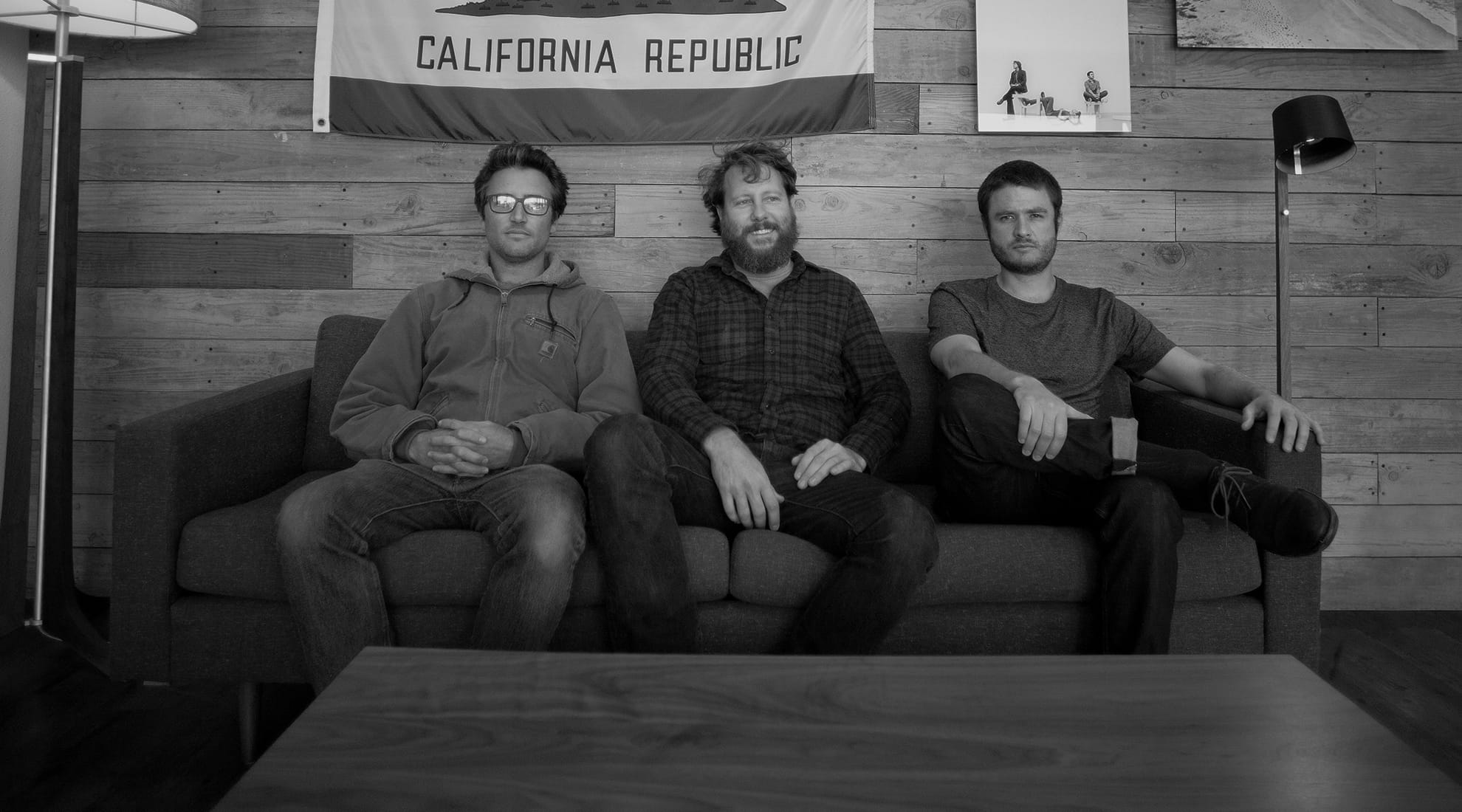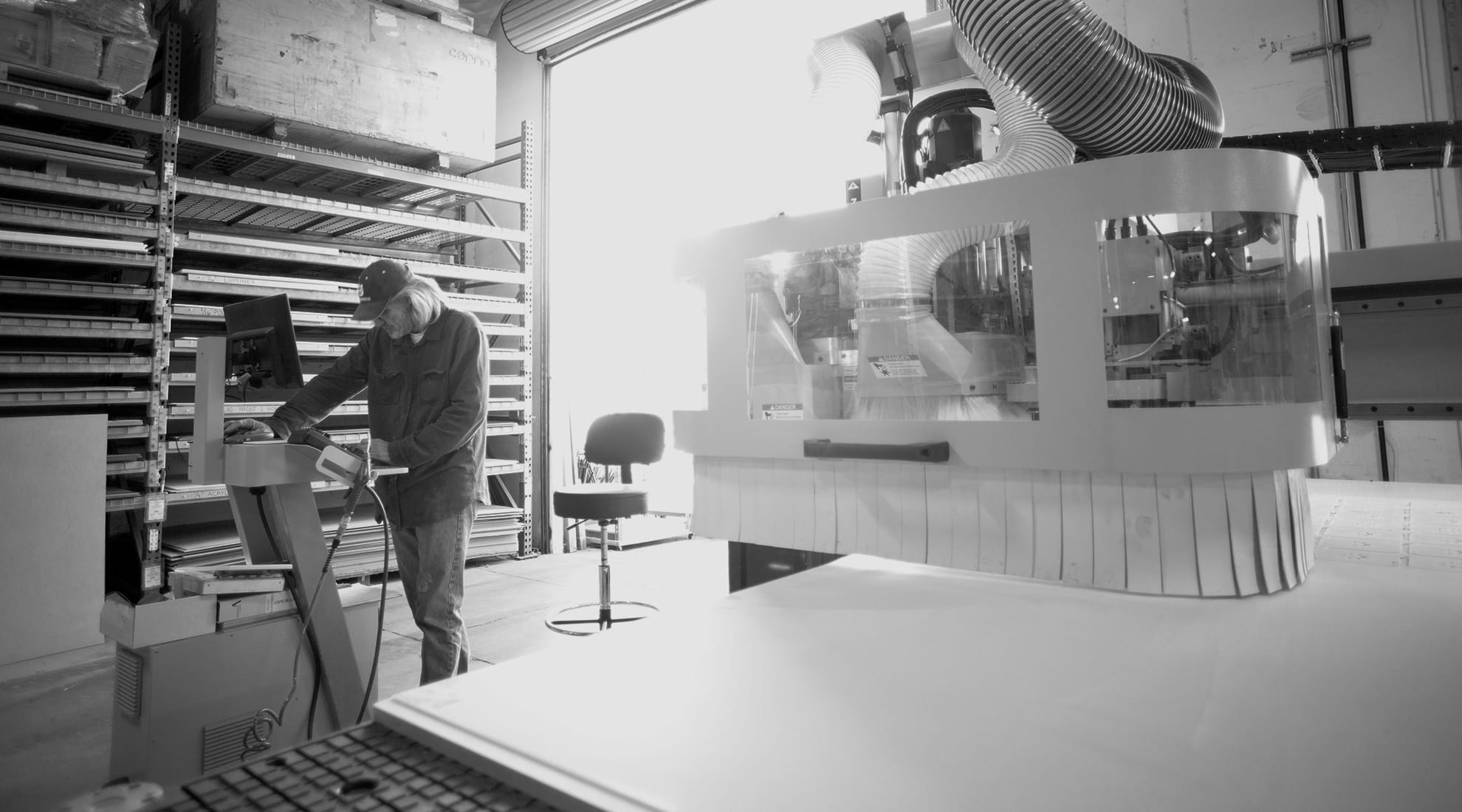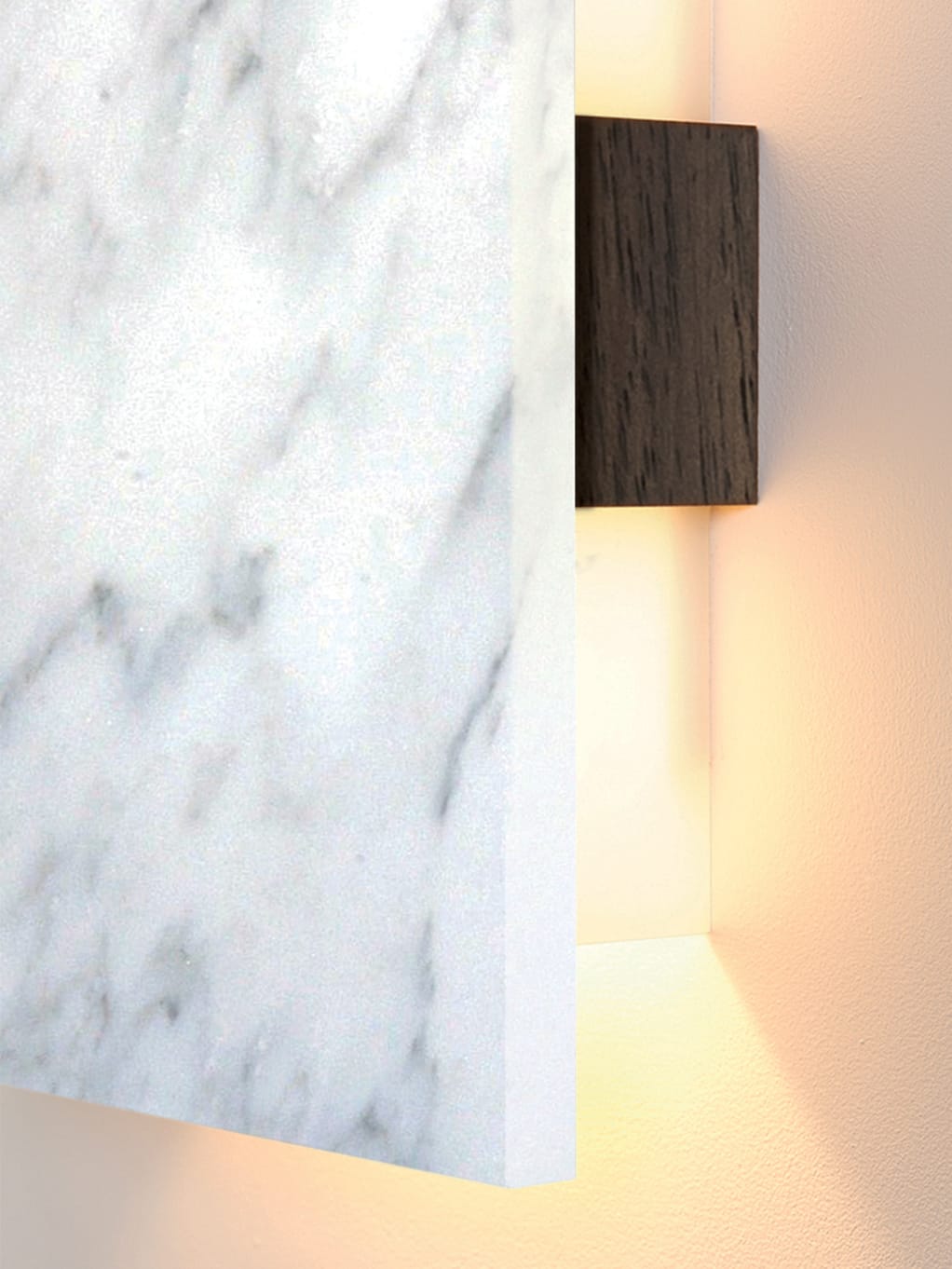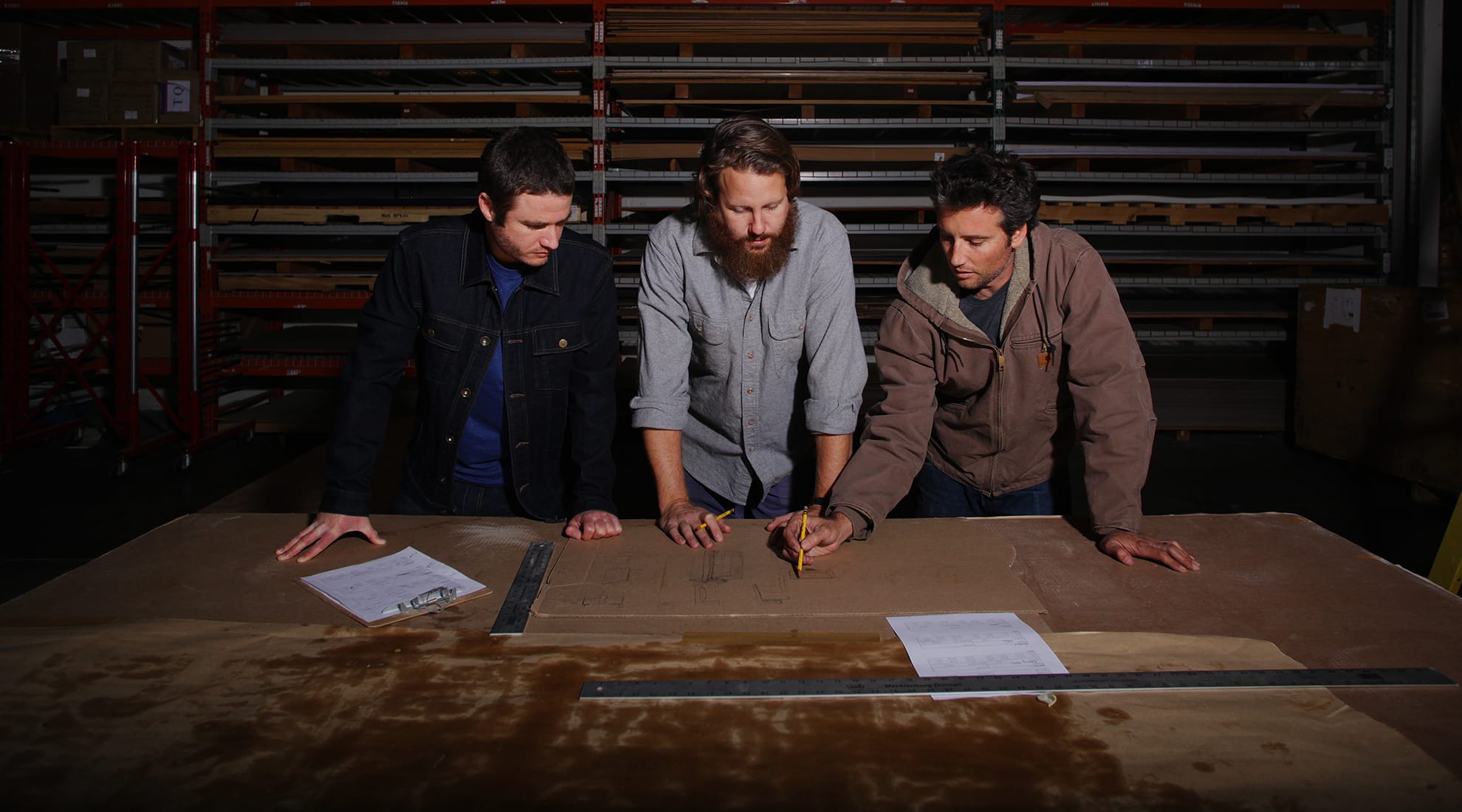
Behind The Design:
A Q&A with Cerno
This SoCal trio brings a sharp contemporary aesthetic, innovation in
materials and lifelong friendship to modern lighting design.
Cerno began when three childhood friends decided to start a design and manufacturing company out of a garage in Laguna Beach, California. Bret Englander, Daniel Wacholder and Nick Sheridan at the time were in their late twenties brimming with ambition; and also very naive about the lighting industry. The founders attribute their unorthodox approach and designs to their naivete.
Today, Cerno's toolbox is a combination of cutting-edge CNC mills and routers, but also many tools you would find in a traditional woodshop or metal shop. Their skilled team is extremely hands-on, which is evident in the quality of each fixture that is designed and made at their Southern California factory.

Cerno was founded in 2009 by Bret Englander, Daniel Wacholder and Nick Sheridan in their hometown of Laguna Beach, California. We caught up with the trio to learn more about their design process, the importance of materials, and the beach where it all began.
What’s your design process like?
The design aesthetic of Cerno lighting was developed mostly when Nick was in architecture school, which shaped his sensibility, along with an academic year spent studying in Italy and other traveling. That aesthetic value is applied to both a need, i.e. a working desk lamp, and a set of components, like a specific LED array, or a dimmer. It’s usually a need or a new component will be a starting point to inspire a design.
The way we work has a lot to do with being very tight knit from day one. We’ve known each other for 25 and 30 years. That’s a unique thing to bring to the professional environment, and it makes for a different approach to business. Really, this company started on the beach 30 years ago. We all went very separate ways professionally and academically, and it’s like 3 brothers bringing all their different skill sets together.
“Really, this company started on a beach 30 years ago...it’s like 3 brothers bringing all their different skill sets together.”
What’s important to you in design?
Honesty in material is important to our brand. We use solid walnut and maple in ways where you can appreciate the materiality. If we use veneer, you can see its thickness at the edge. The forms are purpose-driven and clean, lacking surplus. Form is backed by function, not by a desire to create ornamentation.
Speaking of materials, Cerno has started featuring different materials in their new designs, like marble and fabric. How did this come about?
Often our inspiration comes from exploring new materials, which was definitely the case with the Carrara marble and the fabric used for the Lenis. New materials liberate the design process. Marble is another one of Mother Nature’s miracles; each piece is unique, some are even translucent, which is definitely a bonus. We also like that marble transcends modern and traditional design. It’s a dynamic material that works really well with our Tersus and Fortis sconces.

A close-up view of Cerno’s Tersus LED Wall Sconce in Carrara Marble and Walnut.
The fabric we used for the Lenis has a nice amount of elasticity to it. We were originally prototyping with much more rigid materials and found that the harder materials nuanced the beauty of the inner skeleton, which is not what we wanted. The fabric we landed on is form fitting and accentuates the frame, it also does a great job of diffusing the LEDs.
Is it difficult introducing a new product (or material) into the production cycle?
The difficulty of bringing a new product to market really varies product by product. When we are working with materials and a manufacturing process we are familiar with, we can work fast and efficiently. However, with products like the Lenis, which required new building techniques and uses new materials, it took about 6 months to fully resolve the design.
Does the design process change when you work with a new material?
The design process absolutely changes and evolves. The research and development is more in depth and there are typically many more prototypes. When exploring with new materials we often do not know how things will come together and how two less understood materials will interact. Nick’s office usually looks like a laboratory while we are trying to determine if the materials will behave as we thought they would. For us it’s also important that our solutions will not just work once but are repeatable and will work to make thousands of lights.

Cerno founders Bret Englander, Nick Sheridan and Daniel Wacholder
The Lenis breathed new life into the design process for Cerno. It was the first time in a few years that the three of us were intimately involved from conception through a fully realized product that was ready to ship out. This fixture was special for us because it’s an homage to our friendship and our love for the ocean. It definitely required more critical thought and problem-solving than some of our other new fixtures. We started Cerno because we love the process of exploring and problem-solving, which is what you do every time you embark on a new project or product.
Is there a certain new material that you really enjoyed working with and that we can expect to see in future product introductions?
More stone. We love that each piece looks and behaves differently.





